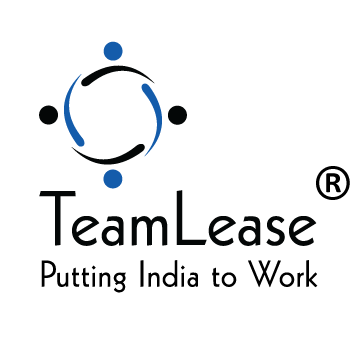Recruitment and Selection: Unveiling the Truth Behind Common Myths & Realities

HR is an organisation’s most misunderstood department, and its role goes beyond organising the Diwali rangoli competition. Recruitment and selection are vital processes for any organisation seeking to build a talented and productive workforce. Organisations are now increasingly realising the crucial role played by HR professionals in driving success. One of the most critical functions of HR is talent acquisition, where they act as the architects of an organisation.
The function of HR extends far beyond merely filling vacancies. It holds the power to shape an organisation’s culture, drive its growth, and impact its bottom line. A lot of effort goes into the process of hiring and sourcing candidates. Here are some of the vital functions of HR within an organisation.
Vital functions of HR
Workforce planning: HR is crucial in aligning recruitment efforts with the organisation’s overall strategic goals. By conducting thorough workforce planning, HR professionals anticipate future talent needs, identify skill gaps, and design recruitment strategies that ensure the availability of the right talent at the right time.
Employer branding: A strong employer brand is a magnet that attracts top talent. HR spearheads employer branding initiatives, crafting compelling narratives that highlight an organisation’s unique culture, values, and opportunities. By effectively showcasing the organisation’s strengths and differentiators, HR attracts candidates who resonate with the brand.
Sourcing and attracting talent: HR professionals utilise diverse sourcing channels and techniques to attract qualified candidates. From leveraging job boards and social media platforms to engaging in networking events and employee referrals, HR deploys a strategic blend of active and passive candidate sourcing to ensure a broad pool of talent.
HR professionals play a crucial role in blue-collar recruitment in collaboration with hiring managers and conduct interviews to assess candidates’ suitability for the roles. This involves conducting job analysis, designing job descriptions, and identifying the necessary skills and qualifications.
Compliance and regulations: In an organisation, especially in the staffing industry where bulk recruitment is done, HR is responsible for ensuring compliance with a series of regulations. From labour laws to health and safety regulations, HR professionals play a vital role in understanding and implementing these requirements. They develop policies, enforce procedures, educate employees on compliance, and uphold ethical and legal standards. By staying updated on regulatory changes and actively monitoring compliance, HR professionals foster a trustworthy, compliant, and ethical work environment while minimising organisational risks.
Common misconceptions about recruitment and selection
Common misconceptions about recruitment and selection often lead to misunderstandings and ineffective practices in hiring. These misconceptions include beliefs such as finding the perfect candidate is easy, HR being solely responsible for the process, and blue-collar recruitment being less challenging than white-collar recruitment. By debunking these myths and shedding light on the realities, HR professionals can gain valuable insights and develop effective strategies to attract and select the right talent for their organisations. Here are seven prevalent myths surrounding recruitment and selection.
Myth #1: Blue-collar recruitment is less complex than white-collar recruitment.
Reality: Blue-collar recruitment brings unique challenges, such as a wider talent pool, skill evaluation, and retention strategies, making it equally complex and demanding as white-collar recruitment. Think about it: manufacturing, construction, logistics, and other industries heavily rely on these skilled blue-collar workers to get the job done. They are the gears that keep the machine moving. Skill assessment is crucial for identifying candidates with the right expertise. Retention strategies, including a supportive work environment and growth opportunities, are critical to keeping blue-collar employees engaged. Balancing these complexities is essential for successful blue-collar recruitment and maximising organisational success.
Myth #2: All HR cares about are policies and procedures
Reality: HR ensures compliance with laws and regulations to protect employees and the business, among other responsibilities.
Myth #3: Online job portals are the only effective recruitment solution.
Reality: While online job portals are widely used, combining them with other channels like social media, employee referrals, and industry-specific platforms can enhance the reach and quality of candidates.
Myth #4: Hiring solely based on qualifications and experience guarantees success.
Reality: While qualifications and experience are necessary, cultural fit, attitude, and growth potential are equally vital for long-term success within an organisation.
Myth #5: HR functions end once the candidate is hired.
Reality: Effective onboarding, continuous training, and development programs are crucial to ensuring new hires’ successful integration and retention.
Myth #6: Recruitment and selection are cost centres.
Reality: Strategic hiring processes can result in significant cost savings through reduced turnover, increased productivity, and improved organisational performance.
Myth #7: The role of HR has little impact on employee engagement and retention.
Reality: An effective talent selection process focusing on employee fit and engagement significantly improves retention rates and overall job satisfaction.
Final notes
While recruitment and selection are essential HR functions, debunking some common misconceptions surrounding these processes is crucial. Streamlining the talent acquisition procedure is not about compromising quality or excluding diverse talent. Instead, it is about optimising procedures for efficiency, objectivity, and a positive candidate experience. Through technology integration, collaboration with hiring managers, and standardised methods, organisations can attract and retain top talent while making informed hiring decisions. Continuously evaluating and refining strategies to meet evolving market dynamics and candidate expectations is crucial. By debunking myths and embracing effective practices, organisations can build a strong workforce that propels success.
TeamLease is a specialised staffing firm, providing temp and contract staffing solutions. We serve across the country with our presence spread over 7500+ pin codes. To explore the crucial aspects of recruitment and selection within HR functions and access valuable insights and expertise in attracting top talent for your organisation contact us.
Latest Blogs
Gig Strike 31 Dec: Wake-Up on Labour Codes Implementation
The nationwide gig workers strike announced by unions for the 31st of December was not a rejection of India’s labour reforms—but a response to the...
Read MoreNew Labour Code: A Workforce Wake-Up Call for India
For years, India’s labour ecosystem resembled a dusty filing closet, layered, confusing and waiting for someone brave enough to open it. The arrival of the...
Read More4 New Labour Codes: How Workers and Employers Benefit
Reforms shape the future only when they simplify the present. India’s new Labour Codes stand out as one of the most meaningful updates to the...
Read MoreEmployer of Record (EOR) Services: Hire in India
According to the International Monetary Fund (IMF), India remains the only major economy projected to grow above 6% in FY 2025, with a forecasted GDP...
Read MoreRPO vs Contract Staffing: Choosing the Right Talent Model
The Talent Dilemma: Balancing Long-Term and Short-Term Hiring Needs Priya, the HR Head of a fast-scaling Indian startup, faced a familiar challenge. Her company was...
Read More





